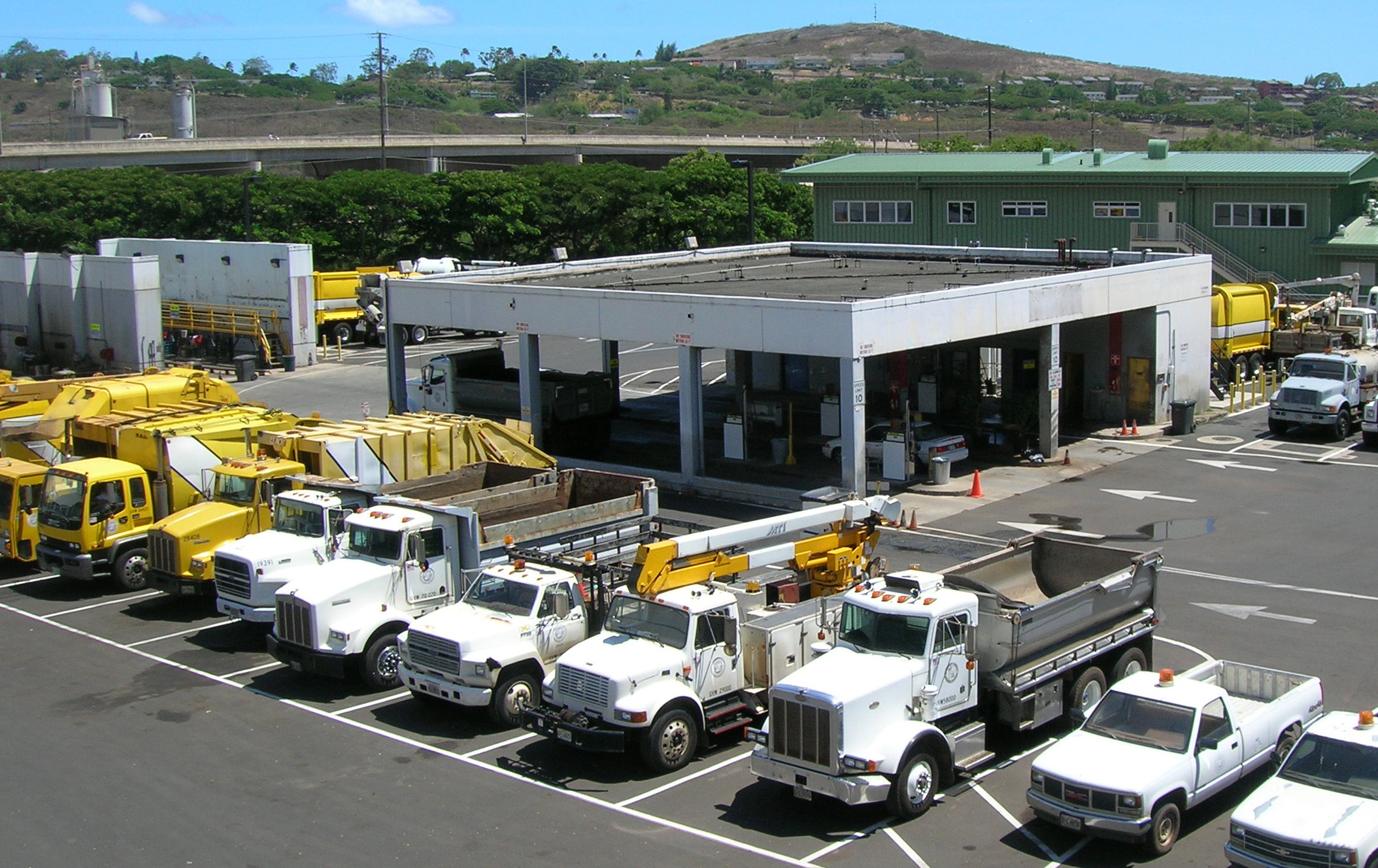By Christopher Long, Retail Biodiesel Sales Manager for Pacific Biodiesel

Retail Biodiesel Fuel Manager Christopher Long at the company’s off-grid biodiesel station at Maui’s Ma’alaea Harbor.
In the race to reduce greenhouse gas emissions, the push to electrify America’s trucking industry is being met with concerns by truckers who prefer to use their existing diesel vehicles, fueled with clean renewable fuels.
“We see biodiesel as a very good way for heavy duty fleets to immediately reduce their greenhouse gas emissions and we’ve seen increasing resistance to EVs in that sector for many practical and economic reasons,” said Pacific Biodiesel Director of Operations Jenna Long.
At a Hawaii transportation industry conference attended by Pacific Biodiesel team members in September, it became clear that local fleet managers want to keep their hands on the wheel when it comes to choosing how and when to green their fleet. As options like electrification and hydrogen were discussed, many fleet managers pushed back on being forced into any one solution.
Total electrification of the trucking industry, they said, could ultimately mean substantially higher costs for consumers, creating a negative impact on our local economy. Diesel trucks, they explained, allow for a longer driving range and more drive time per shift compared to EVs that require frequent recharging and have a limited range per charge. Diesel vehicles can transport more payload compared to electric trucks that have reduced payload capacity due to heavy battery weight. Also, new electric and hydrogen vehicles are exponentially more expensive than diesel trucks and require long lead time.
Many of these concerns echoed what the American Trucking Association recently stated in a press release outlining their opposition to “California’s development of the Advanced Clean Truck and Advanced Clean Fleet rules that aim to create a zero-emission vehicle market beginning nest year.
“To get to zero, we need to be honest and transparent about the road ahead. The infrastructure to support clean, next generation trucks must first be in place. Production of renewable and low-carbon fuels must increase… A technology-neutral regulatory framework is needed to allow for diverse technology options.”
– American Trucking Association, October 2023
It’s unrealistic and economically burdensome to expect trucking companies to toss out their efficient diesel trucks for EVs, especially since commercial trucks with the newest diesel engine technology are “equipped with particulate filters and selective catalytic reduction systems that achieve near-zero levels of emissions,” according to Diesel Technology Forum (DTF).

The City & County of Honolulu has been using biodiesel in its fleet of 1,000 trucks and other diesel vehicles for nearly 15 years.
DTF states that as of December 2022, “Diesel dominates the trucking sector: For the largest commercial trucks (Class 8) in operation, 96.8% are advanced diesel technology; 1.3% are CNG, 0.2% are electric, and the remainder are gasoline or other fuels. For the entire (Class 3-8) commercial truck population of over 15 million vehicles, 75.6% are powered by diesel with the remainder gasoline (22.9%), compressed natural gas (0.46%), other (ethanol, fuel cell, LNG, propane, 0.85%) and electric (0.09%).” And according to DTF,“65.7% of all commercial diesel trucks (Class 3-8) on the road are 2007 and newer and are equipped with particulate filters so they achieve near-zero emissions for particulates.”
“No other fuel yet matches the full combination of what the newest generation of diesel technology offers: efficient performance, reliability, durability, low-cost operation, high market value for used products, maximum driving range, flexibility in utilization, routing and ready access to servicing, parts and fueling throughout the nation. Alternative technologies may hold promise for the future, but they all require some level of compromise, have higher upfront costs, and have very limited supporting infrastructure for fueling and service.” –Diesel Technology Forum, July 2023
Bottom line, we all need to do everything we can, now, to rapidly reduce fossil fuel. No single renewable transportation solution is a silver bullet. We should be seeking a balanced mix of renewables on our roadways – and in boats, farm equipment, and power generation.

This graphic highlighting the growth in advanced technology diesel vehicles is available at Diesel Technology Forum.
In the clean transportation mix for Hawaii, Biodiesel is a proven, readily available advanced biofuel that can be used in any existing diesel engine to immediately reduce greenhouse gas emissions. Today, especially in advanced diesel engines, biodiesel that’s produced from recycled used cooking oil is by far the lowest lifecycle greenhouse gas transportation fuel available in Hawaii.
The word lifecycle is key. “Zero emission” and “carbon-free” are misleading as descriptions of a clean transportation future in Hawaii. Biodiesel is not a “carbon-free” fuel as it is made of carbon molecules, but what we are focused on (and what should be Hawaii’s goal) is to reduce lifecycle carbon emissions, which means all of the emissions created by manufacturing and using that vehicle, rather than just focusing on what comes out of the tailpipe.
At Pacific Biodiesel, we’re proud to supply Hawaii with a clean fuel that’s good for the economy, good for energy security, and good for the environment. Our community-based biodiesel production model supports Hawaii’s circular economy, including local farming, food production and high-tech jobs that are an exciting future career path for Hawaii’s keiki.
We are continuing to help expand access to our 100% renewable fuel statewide. Our newest off-grid biodiesel fueling station will be opening in December on Sand Island Parkway on Oahu, and another station will be opening on Kauai in early 2024. To learn more and download the free App to access these stations, visit our website. And follow Pacific Biodiesel on Instagram and Facebook for station opening dates and special promotions.
